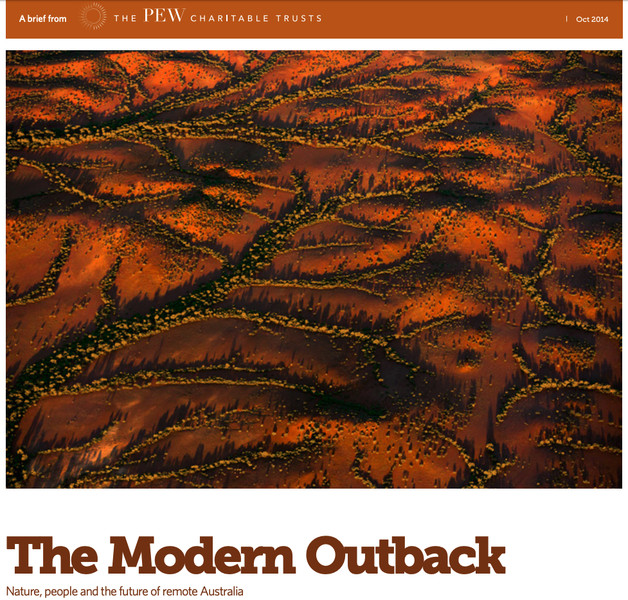The Outback is the vast heartland of Australia. It includes places of exquisite beauty and wildness. It is an area of extremes, alternately lush and bountiful, harsh and inhospitable. The people and land of the Outback embody much that is most distinctive and characteristic of Australia. Yet while the Outback is quintessentially Australian, it is also a place of international consequence.
The Outback has deeply interconnected threads of people and landscapes. Its natural environments support people, jobs, and economies, as well as some of the world’s most diverse and unusual plants and animals. The Outback’s environmental values merit the attention and concern of the nation and the world. However, some of these values are being lost, diminished, or degraded because of particular threats. Managing these risks more effectively, or removing them entirely, would allow for significant progress in ongoing efforts to maintain the environmental, natural and cultural values of the Australian continent as a whole.
The Modern Outback: Nature, people and the future of remote Australia explores four intertwined themes:
- The natural values of Outback Australia and their national and global significance.
- How the Outback functions and the character of its ecology.
- How nature underpins Outback lives and livelihoods.
- The many threats the Outback is facing that are degrading, or may soon degrade, its extraordinary value.
Although this study is about conservation, its focus is broader than national parks and threatened species. Under consideration is how Australia can create a ‘modern Outback’ while maintaining the natural integrity of its diverse regions. The paper discusses practical approaches that are already improving development and conservation outcomes, and that can be increased in size and scale. pp. 242 illusts #0818 Large and heavy book.
